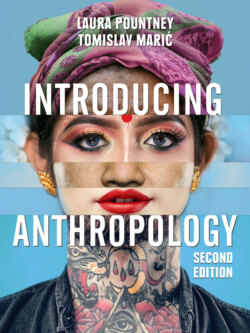Читать книгу Introducing Anthropology - Laura Pountney - Страница 27
Similarities and differences between humans and nonhuman primates
ОглавлениеSo what characteristics do humans still share with other primates, and which are unique? Evolutionary anthropologists attempt to answer this question by comparing genes, morphology, physiology, behaviour and cognition in Homo sapiens and other primates. This section considers some of the main similarities and differences between them.
Humans and African apes share most of their DNA, but important functional differences have accumulated. Scientists have shown how humans continue to manifest striking similarities to the African apes both physically and genetically, especially to the chimpanzees and bonobos. For example, humans have forty-six chromosomes in their cells, while all the great apes have forty-eight. Research on mapping the entire genome of common chimpanzees was completed in 2005 and shows that 99 per cent of DNA sequences and 96 per cent of protein sequences of humans and chimpanzees are the same. This reflects the relatively recent split between the species since their last common ancestor 6 million years ago. However, it was discovered, unsurprisingly, that the genes that differ mostly control speech, smelling, hearing, digesting proteins and the likelihood of catching certain diseases, as well as the growth and efficiency of the brain, reflecting the fact that humans have been evolving separately for the past 6 million years.
